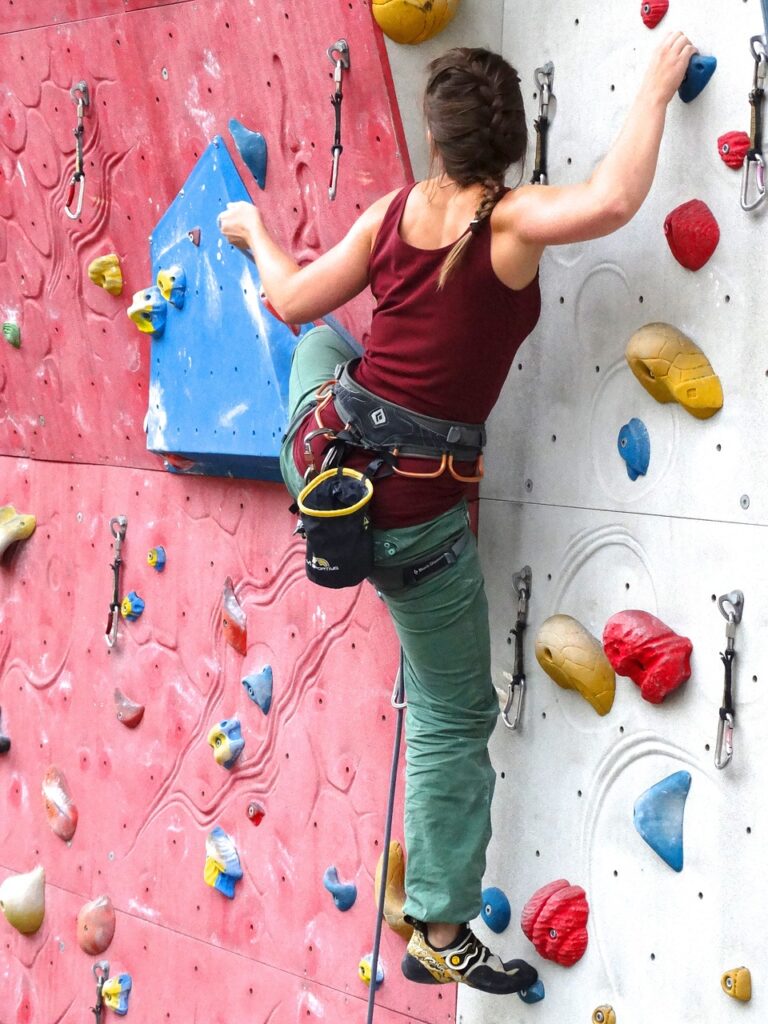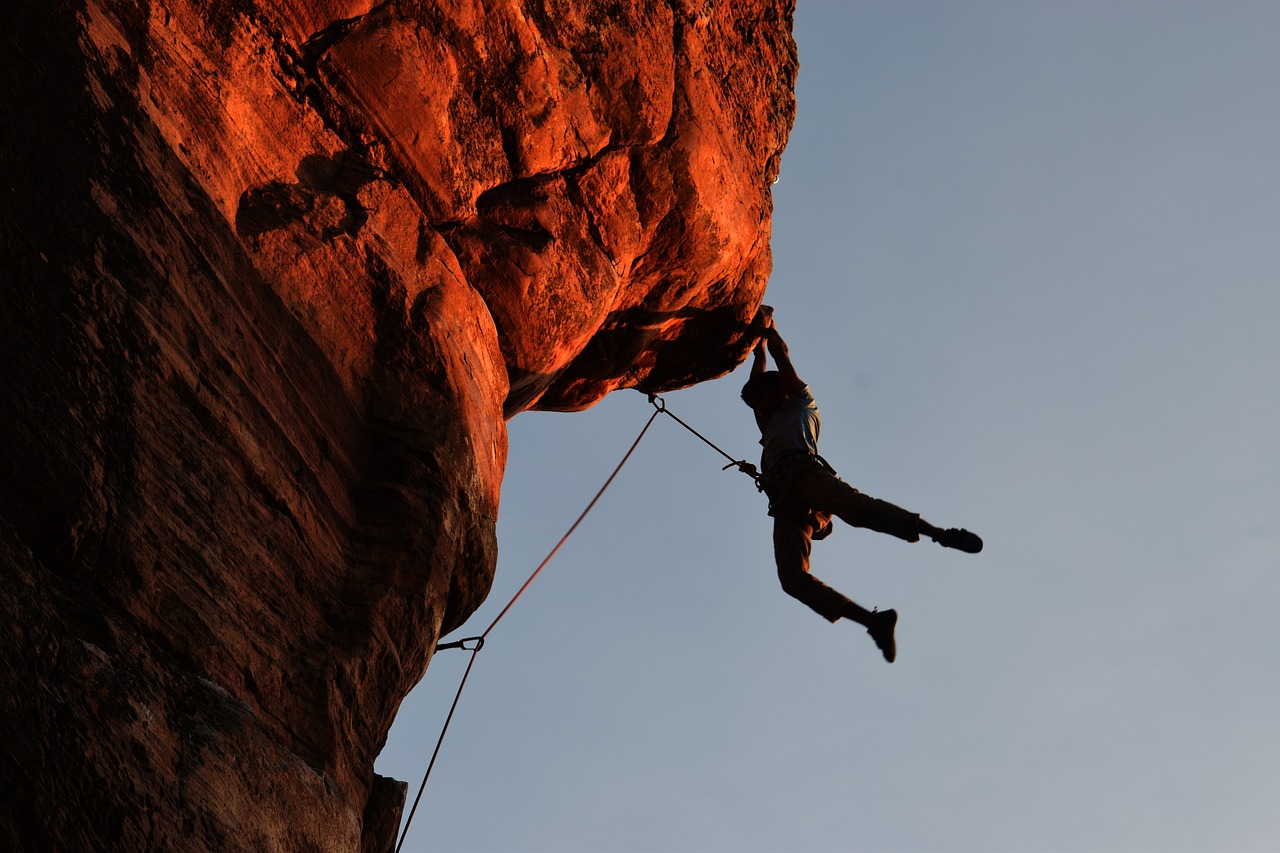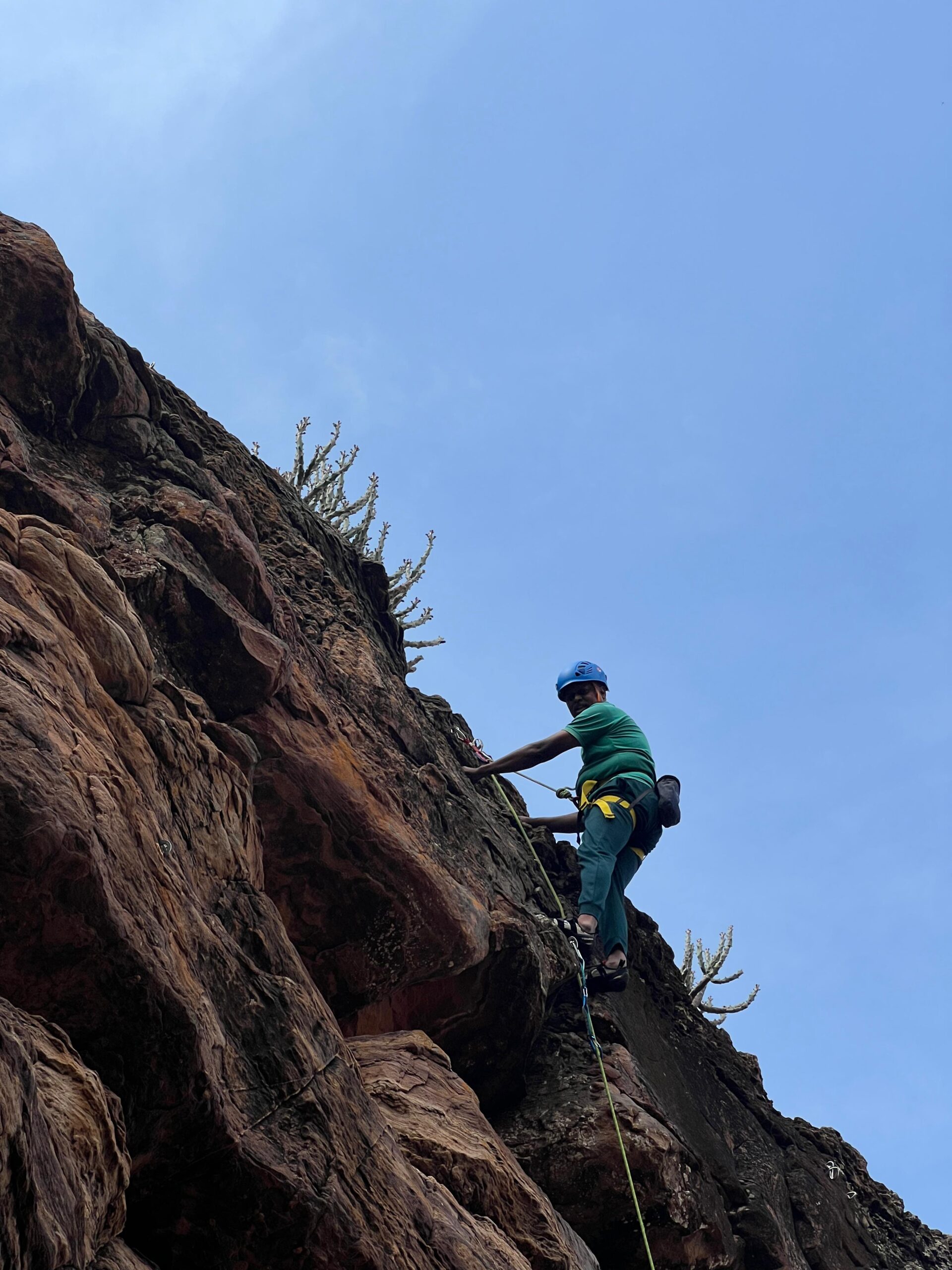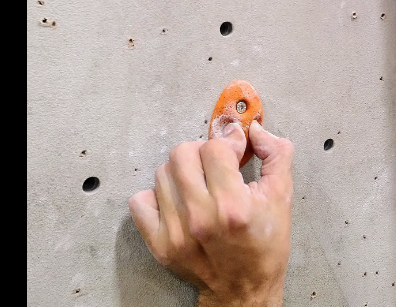Answers to Your Questions
1. What are the two types of climbing?
The two primary types of climbing are indoor climbing, done in controlled environments with artificial walls, and outdoor climbing, performed on natural rock formations.
2. Is trad climbing risky?
Yes, trad climbing is riskier than sport climbing. It requires climbers to place their own protection, and poorly placed gear can fail during a fall. This increases the potential for injury.
3. Is rock climbing a trend?
Rock climbing has grown in popularity in recent years, partly due to its inclusion in the Olympics and increased access to climbing gyms. While it’s trendy, it has long been a beloved sport with deep roots.
4. Who invented rock climbing?
Rock climbing as a sport originated in the late 19th century. German climber Oscar Schuster and British climbers like Albert Mummery are credited with pioneering climbing as a recreational activity.
5. How to begin rock climbing?
Start by visiting an indoor climbing gym, where you can learn basic techniques and safety practices. Take beginner classes or climb with experienced friends to build your skills and confidence.

6. Is it good to rock climb?
Yes, rock climbing is excellent for physical fitness, mental focus, and building strength. It’s a fun way to stay active and improve problem-solving skills while enjoying nature or socializing indoors.
7. Are rock climbers strong?
Yes, rock climbers are typically very strong. The sport develops functional strength, especially in the upper body, core, and grip, along with endurance and flexibility.
8. What are the disadvantages of rock climbing?
- Risk of injury, especially with improper technique or safety practices.
- Requires expensive gear and access to climbing locations.
- Can be time-consuming and physically demanding.
9. What is the best body type for climbing?
The ideal climbing body type is lean and strong, with a high strength-to-weight ratio. Flexibility, endurance, and grip strength are more important than size or height.
10. Does rock climbing burn fat?
Yes, rock climbing burns a significant number of calories and helps create a calorie deficit, which aids in fat loss. It also builds muscle, which boosts metabolism.
11. Why do people rock climb?
People climb for adventure, fitness, mental challenges, stress relief, and the joy of overcoming physical and mental obstacles. It also fosters a sense of community and connection with nature.
12. Why do rock climbers need power?
Power is essential for explosive movements, like dynamic reaches or pulling through overhangs. It helps climbers tackle challenging routes efficiently.
13. What are the types of rock climbing?
Types of climbing include bouldering, sport climbing, trad climbing, top-rope climbing, ice climbing, alpine climbing, and aid climbing.
14. Is rock climbing a sport?
Yes, rock climbing is a sport that combines physical strength, technical skill, and mental focus. It’s also a competitive discipline, recognized in the Olympics.
15. What are the effects of rock climbing?
Climbing improves physical fitness, mental resilience, problem-solving, and social interaction. It can reduce stress and increase confidence.
16. Can I learn rock climb?
Yes, anyone can learn rock climbing with practice, proper instruction, and dedication. Start with beginner-friendly routes or classes.
17. What is the minimum weight for rock climbing?
There is no strict minimum weight. However, lighter climbers often have an advantage due to their strength-to-weight ratio. Proper harnesses are available for all sizes.
18. How can I learn rock climbing at home?
You can practice climbing-related exercises at home, such as pull-ups, grip training, and core workouts. A home climbing wall or hangboard can help simulate climbing movements.
19. Does rock climbing take skill?
Yes, climbing requires a combination of technical skills, such as footwork, body positioning, and route reading, alongside physical strength and mental focus.
20. What is the easiest climbing level?
The easiest climbing levels are:
- Indoor Bouldering: V0
- Indoor Rope Climbing: 5.5 or 5.6
- Outdoor Climbing: Grades vary by region but start at beginner-friendly levels.
21. What is indoor rock climbing called?
Indoor rock climbing includes bouldering, top-roping, and lead climbing, depending on the style and setup.
22. Can you get fit by just rock climbing?
Yes, climbing is a full-body workout that builds strength, endurance, and flexibility. However, combining it with other exercises can optimize fitness.
23. Is rock climbing easier for short people?
Short climbers may find some moves harder due to reach limitations but can compensate with better technique, flexibility, and creative movement.
24. How should I start climbing?
Start with indoor climbing, focusing on beginner routes. Learn basic techniques and safety practices, and gradually progress to outdoor climbing if desired.
25. What are the two types of rock climbing?
The two main types are free climbing (using only hands and feet for upward movement) and aid climbing (using gear to assist).
26. Is top rope free climbing?
Yes, top-roping is a type of free climbing because the climber uses only their body for upward movement, with the rope serving as safety.
27. What is climbing method?
A climbing method refers to the techniques and strategies used to ascend a route, including footwork, body positioning, and grip styles.
28. Who first started rock climbing?
Rock climbing originated in the late 19th century, with pioneers like Oscar Schuster and Albert Mummery developing the sport.
29. How high is a pitch in climbing?
A pitch is typically 30–60 meters (100–200 feet) high, depending on the rope length and route.
30. Does rock climbing build muscle?
Yes, climbing builds muscle in the arms, shoulders, back, core, and legs. It also improves grip strength.
31. Is it OK to go climbing every day?
Climbing every day can lead to overuse injuries. Rest days are essential for recovery, especially for fingers and tendons.
32. Which is better, running or climbing?
Both have unique benefits. Climbing builds strength and coordination, while running is better for cardiovascular endurance. Combining both is ideal.
33. Is climbing a useful skill?
Yes, climbing improves strength, problem-solving, and resilience. It can be practical for outdoor adventures and emergencies.
34. Is rock climbing better than gym?
Rock climbing is more dynamic and engaging than a gym workout, but the gym is better for targeting specific fitness goals. Both can complement each other.
35. How many calories does 30 minutes of rock climbing burn?
Rock climbing burns approximately 250–450 calories in 30 minutes, depending on intensity and body weight.
36. What is the hardest grade in rock climbing?
The hardest grade is currently 5.15c/d (Sport Climbing) and V17 (Bouldering).
37. Is rock climbing safe for kids?
Yes, with proper supervision and safety measures, climbing is safe and highly beneficial for children.
38. What age is rock climbing best?
Climbing can be started at any age, but young adults (18–35) often perform at their peak due to physical fitness and endurance.
39. Is rock climbing easy or hard?
Climbing can be easy or hard, depending on the route and skill level. Beginners can start with simple climbs and progress gradually.
40. Is rock climbing healthy?
Yes, climbing promotes physical fitness, mental focus, and stress relief, making it an excellent activity for overall health.
41. What are three skills needed for rock climbing?
- Technique: Efficient movement and body positioning.
- Grip Strength: Holding onto various types of holds.
- Mental Focus: Staying calm and solving problems on the wall.


